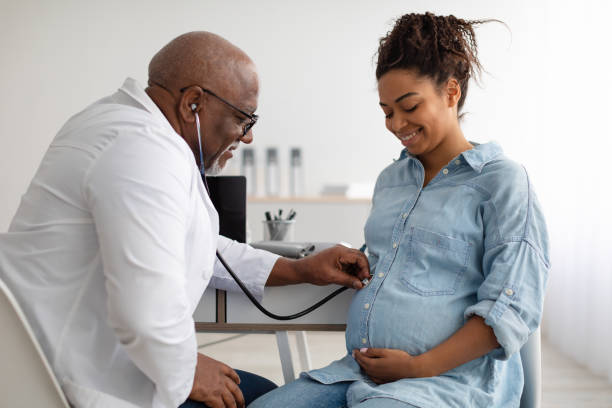A Healthy Start To Pregnancy
[ez-toc]
You can maximize your chances of conception by being aware of factors that can affect your fertility.
Below are 10 fertility tips to increase your chances of conception
- Record Menstrual Cycle Frequency
A woman who wants to have a baby should monitor her menstrual cycle and the intervals between her periods. By tracking this information on a calendar, a woman can better predict when she might be ovulating.
- Monitor Ovulation
Women with regular cycles ovulate about two weeks before the next period.
- Regular Unprotected Sexual Intercourse
It is recommended to have regular unprotected sex without birth pills at least 3-4 times per week, especially during the fertile window.
- Strive for a Healthy Body Weight
A woman’s weight can also impact the chances of conception. Being overweight or underweight may reduce the chances of conception. A BMI (body mass index) of 20 to 25 is ideal.
- Take a Prenatal Vitamin
It is recommended that women who are trying to conceive start taking a prenatal vitamin like folic acid before getting pregnant. Folic acid supplementation is a good idea because it reduces the chances of having a baby affected with neural tube defects. Other multivitamins may be essential.
- Eat Healthy Foods
Eating a variety of healthy foods, fruits, and vegetables can prepare a woman’s body for pregnancy by giving her adequate stores of essential nutrients. Caffeine or coffee consumption should be avoided.
- Stop Smoking and Alcohol Habits
Smoking decreases sperm count and quality. Smoking ages a woman’s ovaries and depletes her supply of eggs prematurely. Women trying to conceive should stay away from secondhand smoke. Alcohol is discouraged for both men and women. Evidence suggests that alcohol reduces sperm quality and quantity. Embryo implantation can also be affected.
- Cut Back on Strenuous workouts
Getting too much exercise or frequent strenuous workouts could interfere with ovulation.
- Age is an important factor
As a woman gets older, her fertility decreases. This is because of age-related changes in the ovaries that cause a decline in the quantity and quality of her eggs.
- Know When to Seek Help
A couple should consider having an infertility evaluation if the woman is 35 years or older and has not become pregnant after six months of regular sex without contraception.
If the woman is less than 35 years old and has not become pregnant after one year of adequate and regular sex without contraception, please seek help.
If a woman is getting married at 40 years and above, she may have to seek help immediately.
TIMING FOR CONCEPTION
When planning a baby, a couple needs to make sure that they are having regular unprotected intercourse and at least 3-4 times weekly (every other day) at the correct time in a woman’s menstrual cycle. Awareness of your fertile window increases your chances of conception.
Your fertile window is the days in the menstrual cycle when conception is possible. This is from about five (5) days before ovulation, plus the day of ovulation and the day after ovulation. So that is about 7 days before ovulation.
This is because sperm can live for around 5 days inside a woman’s body, and the egg for only 12-24 hours. So, if you have had sex in the days before ovulation, the sperm can ‘wait’ for the egg to be released.
TOP TIPS FOR FINDING THE FERTILE WINDOW
These are things you can do to track your cycle and find out when you are most fertile.
- Keep a Diary of your Menstrual Cycle
The menstrual cycle is the time from the first day of a woman’s period to the first day of your next period. Women’s menstrual cycles vary in length. The average menstrual cycle is 28 days long, however, anything between 21 and 35 days is considered normal. Keeping a record of when your period usually starts and stops will help you find your fertility window. You can simply mark your periods in a calendar, in a diary, or on a free period tracker app on your smartphone.
We recommend you track two to three cycles and work out the average length of your cycles and work out the average length of your cycle. From this, you can work out the average time you are likely to ovulate.
OVULATION CALCULATOR
The first day of your period is day one of your menstrual cycle, also known as the last menstrual period (LMP).
To calculate your ovulation day, subtract 14 days from your average cycle length.
- If your cycle length is 28 days, ovulation should occur on day 14. Therefore, aim to have regular intercourse from 10 days after your period has started.
- If your cycle length is 35 days, ovulation should occur at day 21 and intercourse should be from 17 days after your period started.
- If you have a shorter interval between periods, say 24 days cycle length, your ovulation should happen on day 10 and your fertile window is between day 5 to day 12 of her cycle.
SIGNS OF OVULATION
Knowing your body and how it changes when ovulation approaches is also important. There are some bodily signs that can help you to identify if ovulation is approaching.
A few days before ovulation, the vaginal mucus changes and becomes clear and slippery a bit like egg white to allow sperm to swim and pass through the cervix.
USING AN OVULATION KIT
If you want to reassure yourself about getting your timing right, you can use ovulation predictor kits which are readily available at any pharmacy.
A few days before you think you will be ovulating, you start testing your urine each day. You can expect to ovulate 24-36 hours after the test turns positive, so make sure you and your partner are ready then!

